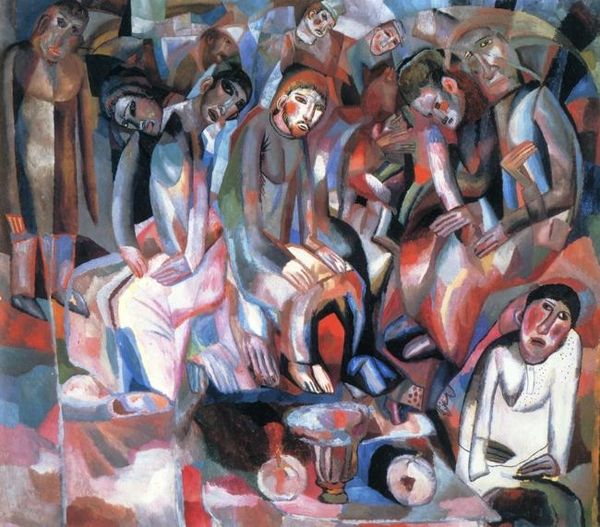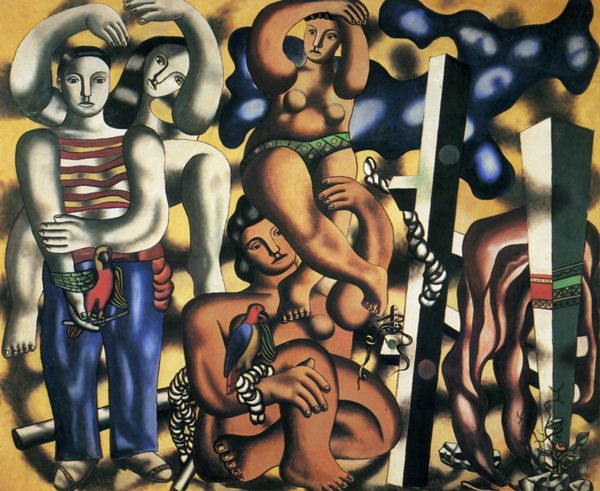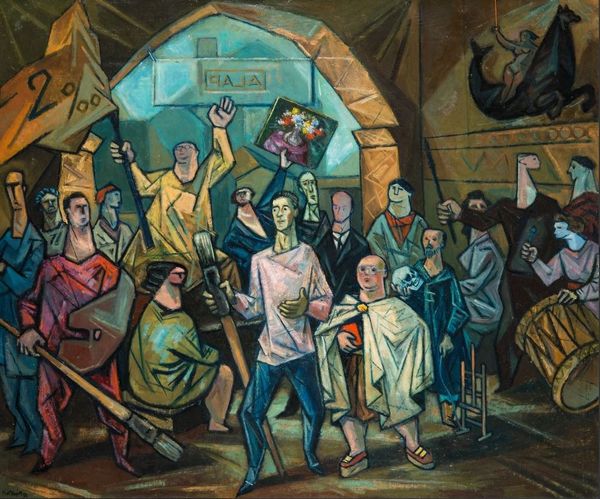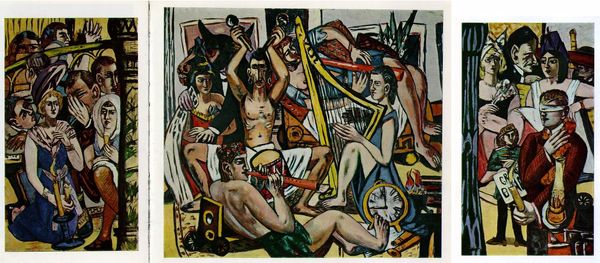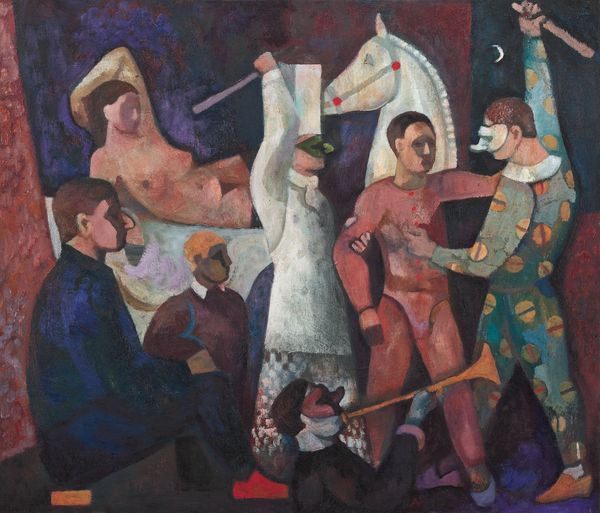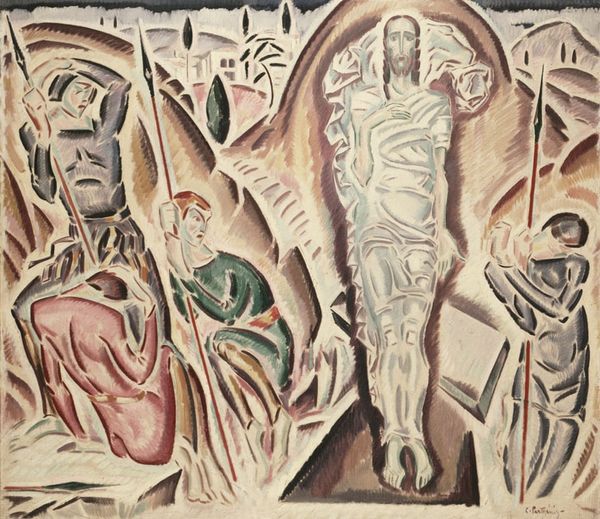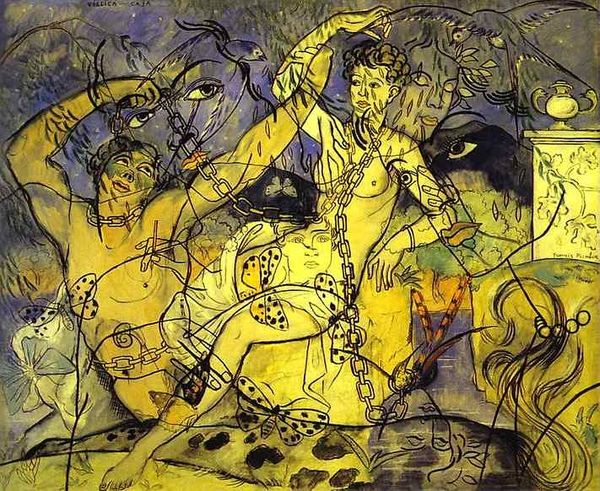
painting, oil-paint
#
portrait
#
narrative-art
#
painting
#
oil-paint
#
figuration
#
group-portraits
#
expressionism
#
expressionist
Copyright: Public domain
Editor: Max Beckmann’s “Night,” painted in 1918 with oil on canvas, is… intense, wouldn't you say? The claustrophobic composition and distorted figures really throw you off balance. I’m curious, what do you see as the heart of this chaotic scene? Curator: Chaotic is a brilliant word for it! To me, it’s like diving into a nightmare, a visceral reaction to the trauma of World War I that Beckmann experienced firsthand. Look at how he uses jarring angles and a limited palette—mainly these unsettling ochres and browns—to amplify that sense of dread. Does the arrangement of figures tell you anything about the emotional landscape of the moment? Editor: It definitely feels like a breaking point. The figures seem trapped, both physically and psychologically. Are those bound figures in the center meant to represent the helplessness of the individual in the face of war? Curator: Precisely! Beckmann doesn’t offer us easy answers or heroic narratives. It’s not just about physical captivity; it's about the imprisonment of the soul. He forces us to confront the darkest aspects of human nature. Tell me, how does that brutal honesty resonate with you? Editor: It's a little unsettling, if I’m honest. It's hard to look at but feels really… raw. It feels like he wanted the viewer to truly experience the horror without flinching. Curator: Exactly! Beckmann isn’t afraid to be difficult. This piece, with its unflinching portrayal of violence and despair, becomes a powerful statement against the dehumanizing forces of war. It's less about recording an event and more about excavating its emotional and spiritual impact. Isn't it fascinating how much emotional weight paint can carry? Editor: Definitely food for thought. I had no idea just how much personal history could be embedded within a scene like this. Curator: Art always shows something when you look closely, right? Always a little bit about the maker too!
Comments
No comments
Be the first to comment and join the conversation on the ultimate creative platform.

